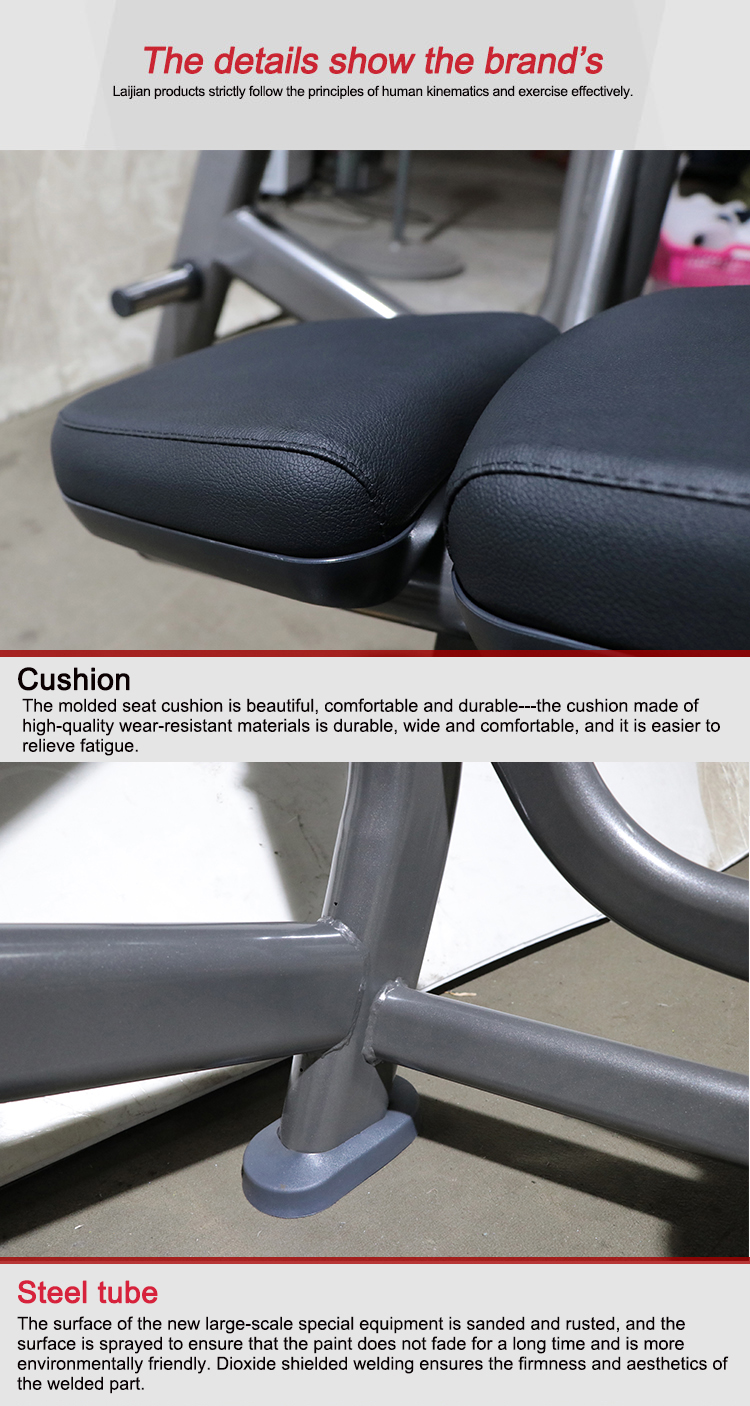
Privacy statement: Your privacy is very important to Us. Our company promises not to disclose your personal information to any external company with out your explicit permission.
Benefits of incorporating the new design powerlifting decline bench press into your training regimen
Model No.: LJ-5128A
Place Of Origin: China
Types Of: Medium Loader
Capacity: Other
Material: Steel
Can Be Customized: Yes
Application: Universal
Brand Name: Ljfitness
Type: Medium Loader
Painting Colors: Shiny black,matt black,red,white,yellow and so on
Cushion: New mold cushion
Dimension: 2200*1280*1320mm
Cushion Color: Red,black,yellow and so on
Tube Thickness: 3.0mm
Customize: Customizable for large quantity
Coating: three layers powder coating
N.W: 110kg
Tube Size: 114*63.5
Place Of Origin: Guangdong, China
Size: 2200*1280*1320mm
Packaging: Use flat packaging and wrap up with contraction protective film to avoid scratch, bend and deformation in transportation and reduce transportation costs, or customized for all best selling assisted chin dip import sports equipment.
Transportation: Ocean,Land
Supply Ability: 3000 Piece/Pieces per Month Apply to regular import sports equipment
Port: Shenzhen,Foshan,Guangzhou
Payment Type: L/C,Western Union,D/P,D/A,T/T,Cash payment
Incoterm: FOB,CFR,CIF,EXW
Introducing our revolutionary New Design Powerlifting Decline Bench Press! Engineered with cutting-edge technology and expert craftsmanship, this bench press is the ultimate tool for serious athletes and fitness enthusiasts. With its sleek and ergonomic design, it provides maximum comfort and stability during intense workouts. The adjustable decline feature allows for targeted muscle engagement, helping you achieve superior results in your powerlifting routine. Made with durable materials and built to withstand heavy weights, this bench press is a long-lasting investment in your fitness journey. Elevate your training sessions to new heights with our New Design Powerlifting Decline Bench Press!
The decline bench is a type of weightlifting bench that is angled downward, with the head positioned lower than the feet. This angle puts more emphasis on the lower chest muscles, as well as the shoulders and triceps. It is commonly used for exercises such as decline bench press and decline dumbbell flyes.
The decline bench press is a variation of the traditional bench press exercise in which the bench is set at a decline angle of around 15-30 degrees. This angle targets the lower portion of the chest muscles (pectoralis major) and the triceps to a greater extent compared to the flat or incline bench press.
To perform the decline bench press:
1. Set up the decline bench at the desired angle and adjust the barbell or dumbbells to a manageable weight.
2. Sit on the bench with your feet secured under the foot pads or have a spotter hold them down.
3. Lie back on the bench and grip the barbell or dumbbells with a slightly wider than shoulder-width grip.
4. Lift the weight off the rack and lower it towards your lower chest while keeping your elbows tucked in at a 45-degree angle.
5. Pause for a moment when the weight is just above your chest and then push it back up to the starting position by extending your arms.
6. Repeat for the desired number of reps.
The decline bench press can be incorporated into your chest workout routine to add variety and target different areas of the chest. However, it is important to note that this exercise may not be suitable for individuals with shoulder or lower back issues. It is recommended to consult with a fitness professional or trainer to ensure proper form and technique.



Product Categories : Strength Machine > Luxury Strength Equipment


Privacy statement: Your privacy is very important to Us. Our company promises not to disclose your personal information to any external company with out your explicit permission.

Fill in more information so that we can get in touch with you faster
Privacy statement: Your privacy is very important to Us. Our company promises not to disclose your personal information to any external company with out your explicit permission.